Octocrylene
Synonym(s):Octocrylene;OC;2-Ethylhexyl 2-cyano-3,3-diphenylacrylate;2-Cyano-3,3-diphenylacrylic acid 2-ethylhexyl ester;2-Ethylhexyl α-cyano-β-phenylcinnamate
- CAS NO.:6197-30-4
- Empirical Formula: C24H27NO2
- Molecular Weight: 361.48
- MDL number: MFCD00059260
- EINECS: 228-250-8
- SAFETY DATA SHEET (SDS)
- Update Date: 2025-12-17 09:49:38
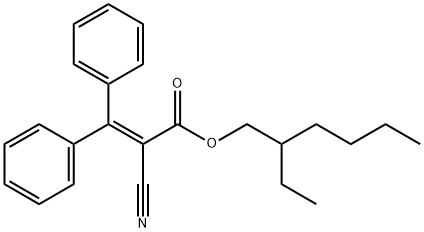
What is Octocrylene?
Absorption
Ecamsule is used topically, it not absorbed or metabolized.
Toxicity
Octocrylene is one of those ingredients that can be absorbed into the skin and some studies have shown that it may promote generation of potentially harmful free radicals when exposed to light. Since free radicals can damage DNA, there is concern that this ingredient might have contributed to an increased incidence of melanoma in sunscreen-users compared to non-users.
Description
Octocrylene (OCT) is a viscous, clear, colorlesss oi introduced in commercial sunscreens and anti-ageing creams about 15 years ago. It is the 2-ethylhexyl ester of 2-cyano-3,3-diphenylacrylic acid, with the extended conjugation of the acid portion that absorbs UVB and short-wave UVA (ultraviolet) rays, with wavelengths from 280 to 320 nm, which promote tanning but also contribute to the onset of sunburn and skin cancer. It is used in various body care products, in concentrations up to 10%, to provide an adequate sun-protection factor or to protect the body care formulations themselves from UV radiation[1].
Chemical properties
Clear yellow viscous liquid with mild characteristic odor, Miscible in methanol, n-butanol, ethyl acetate, mineral oil, hexane, toluene. Immiscible in water. Octocrylene is an effective oil soluble liquid UV‐B filter. It has excellent dissolving properties for crystalline UV filters.
The Uses of Octocrylene
Octocrylene, a UVB sunscreen with strong water-resistant properties and a broad-band absorption range, is an ingredient commonly used in sunscreens due to its ability to absorb ultraviolet rays, thereby protecting the skin from sun damage. Chemically related to cinnamates, it is valued for its photostability, which not only ensures its own effectiveness but also enhances the photostability of other sunscreen components within a formulation. Octocrylene can be utilized to increase the Sun Protection Factor (SPF) and improve water resistance, making it an effective SPF booster and waterproofing enhancer. However, its high cost and the approved usage level of 7 to 10 percent in both the United States and the European Union can limit its application. Despite its popularity among formulators, the expense and usage restrictions may present challenges. Furthermore, some studies suggest that octocrylene may cause allergic reactions in individuals with a history of photoallergy, which is an important consideration for those with sensitive skin.
Indications
In the US, Octocrylene has been evaluated by the FDA and is considered safe for use up to 10% in the formula. Similarly, the EU allows its use up to 10% in a formula while Health Canada allows a maximum use level of 12%.
Background
Octocrylene is a compound often used as an additive in sun screen, and is thought to have skin moisturizing effects because of its emollient properties. What makes this chemical such a popular additive to sun block, is its ability to neutralize UV radiation dissipated by sunlight, and to minimize skin damage from prolonged sun exposure. Octocrylene is also often combined with avobenzone, another common sunscreen ingredient often appearing on ingredient labels. Because of its effectiveness, the chemical has been approved across the globe for use in cosmetics and skin care products, but the concentrations of this ingredient are usually limited to no more than 10 or 12 percent. However, the use of this chemical doesn’t just stop with sunscreen for face and arms, but can extend to a variety of other products, like hair spray, tannin oil, BB cream, conditioner, and CC cream, among others. Octocrylene may cause contact and photocontact allergy.
Definition
ChEBI: Octocrylene is a diarylmethane. It is an ester formed by the condensation of a diphenylcyanoacrylate with 2-ethylhexanol, used in sunscreens and cosmetics.
Benefits
Octocrylene is a compound often used as an additive in sun screen, and is thought to have skin moisturizing effects because of its emollient properties. What makes this chemical such a popular additive to sun block, is its ability to neutralize UV radiation dissipated by sunlight, and to minimize skin damage from prolonged sun exposure. Octocrylene protects the skin from the harmful effects of the sun and premature skin aging. It helps prevent the risk of skin cancer. This filter mainly absorbs UVB rays, and shorter UVA rays, which are responsible for aging but also for skin cancer.
General Description
Yellow viscous liquid. Insoluble in water.
Air & Water Reactions
Insoluble in water.
Reactivity Profile
Octocrilene is an ester derivative. Esters react with acids to liberate heat along with alcohols and acids. Strong oxidizing acids may cause a vigorous reaction that is sufficiently exothermic to ignite the reaction products. Heat is also generated by the interaction of esters with caustic solutions. Flammable hydrogen is generated by mixing esters with alkali metals and hydrides.
Fire Hazard
Flash point data for Octocrilene are not available. Octocrilene is probably combustible.
Flammability and Explosibility
Non flammable
Contact allergens
Octocrylene is an anti-UVB filter used in cosmetics that may induce photoallergic contact dermatitis.
Side Effects
Some people are concerned about the body’s ability to absorb octocrylene, which can present in the blood, urine, and breast milk. It may promote the production of free radicals, which can damage DNA, potentially increasing the risk of melanoma. However, further research is necessary.
People with sensitive skin or skin conditions, such as eczema, may prefer to avoid products containing octocrylene. Alternatively, a person can perform a patch test before using a product containing octocrylene for the first time. The patch test should indicate if an individual is allergic or sensitive to an ingredient in the product.
The Food and Drug Administration (FDA) evaluated the safety of octocrylene for use in sunscreen products and found that concentrations of up to 10% are safe.
The European Scientific Committee on Consumer Safety (SCCS) also stated that octocrylene is safe in products containing concentrations of no more than 10%.
Berardesca, E.,et al.(2019). Review of the safety of octocrylene used as an ultraviolet filter in cosmetics.
https://onlinelibrary.wiley.com/doi/full/10.1111/jdv.15945
Safety Profile
Low toxicity by ingestion. Whenheated to decomposition it emits toxic vapors of NOx.
Metabolism
Ecamsule is used topically, it not absorbed.
References
[1] Antonio Medici. “Octocrylene: From Sunscreens to the Degradation Pathway during Chlorination Processes: Formation of Byproducts and Their Ecotoxicity Assessment.” Molecules (2022).
Properties of Octocrylene
| Melting point: | -10 °C (lit.) |
| Boiling point: | 218 °C/1.5 mmHg (lit.) |
| Density | 1.051 g/mL at 25 °C (lit.) |
| vapor pressure | 0Pa at 25℃ |
| refractive index | n |
| Flash point: | >230 °F |
| storage temp. | 15-25°C |
| solubility | Chloroform (Slightly), Methanol (Sparingly) |
| form | neat |
| form | Oil |
| color | Colourless to Light Yellow |
| Merck | 14,6756 |
| CAS DataBase Reference | 6197-30-4(CAS DataBase Reference) |
| EPA Substance Registry System | 2-Ethylhexyl 2-cyano-3,3-diphenylacrylate (6197-30-4) |
| Absorption | uv max: 303 nm |
Safety information for Octocrylene
| Signal word | Warning |
| Pictogram(s) |
 Exclamation Mark Irritant GHS07 |
| GHS Hazard Statements |
H413:Hazardous to the aquatic environment, long-term hazard |
| Precautionary Statement Codes |
P273:Avoid release to the environment. P501:Dispose of contents/container to..… |
Computed Descriptors for Octocrylene
| InChIKey | FMJSMJQBSVNSBF-UHFFFAOYSA-N |
Octocrylene manufacturer
New Products
4,4-Difluoropiperidine hydrochloride tert-butyl 9-methoxy-3-azaspiro[5.5]undecane-3-carboxylate Indole Methyl Resin N-Isopropylurea N,N-Dicyclohexylcarbodiimide(DCC) MELDRUMS ACID 5-METHYLISOXAZOLE-4-CARBOXYLIC ACID Magnessium Bis glycinate Zinc ascorbate 1-bromo-2-butyne 2-acetamidophenol 9(10H)-anthracenone Erythrosin B, 4-Piperidinopiperidine 2-((4-morpholinophenylamino) (methylthio) methylene) malononitrile 2,4-dihydroxybenzaldehyde 3-(4-morpholinophenylamino)-5-amino-1H-pyrazole-4-carbonitrile Methyl 2-methylquinoline-6-carboxylate 2,6-dichloro-4-nitropyridine 4-Bromo-2-chlorobenzonitrile 2-(benzylamino)acetic acid hydrochloride 4-(tert-Butoxycarbonylamino)but- 2-ynoic acid 3,4-dihydro-2H-benzo[b][1,4]dioxepine 1-Phenyl-1-cycloprppanecarboxylicacidRelated products of tetrahydrofuran
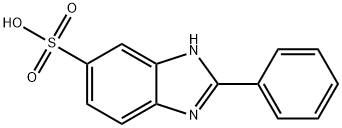



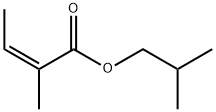

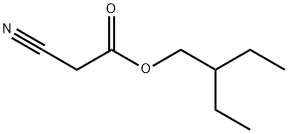
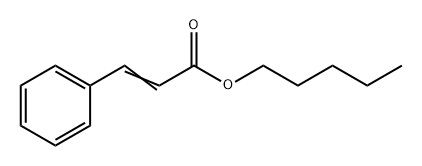
You may like
-
 2-Ethylhexyl 2-Cyano-3,3-diphenylacrylate CAS 6197-30-4View Details
2-Ethylhexyl 2-Cyano-3,3-diphenylacrylate CAS 6197-30-4View Details
6197-30-4 -
 2-Ethylhexyl 2-cyano-3,3-diphenylacrylate, 97% CAS 6197-30-4View Details
2-Ethylhexyl 2-cyano-3,3-diphenylacrylate, 97% CAS 6197-30-4View Details
6197-30-4 -
 Octocrylene CAS 6197-30-4View Details
Octocrylene CAS 6197-30-4View Details
6197-30-4 -
 Octocrylene >98% (GC) CAS 6197-30-4View Details
Octocrylene >98% (GC) CAS 6197-30-4View Details
6197-30-4 -
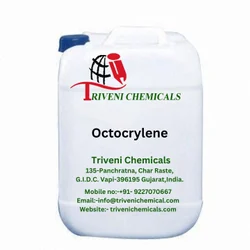 Octocrylene, Packaging Type: DrumView Details
Octocrylene, Packaging Type: DrumView Details
6197-30-4 -
 OctocryleneView Details
OctocryleneView Details
6197-30-4 -
 Octocrylene, For Beauty & Cosmetic, 200 litre DrumView Details
Octocrylene, For Beauty & Cosmetic, 200 litre DrumView Details
6197-30-4 -
 OctocryleneView Details
OctocryleneView Details
6197-30-4
